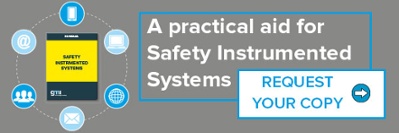Industrial safety is seen universally as a necessity, above all because a safe workplace results in a comfortable, motivating climate.
The current playing field in the realm of safety is made up of both increasingly stringent laws and regulations and the need for increased production capacity and for faster production speeds. This leads workers to operate machinery faster and at greater risk. For example, with regard to machinery safety, both equipment manufacturers and equipment operators are placing great emphasis on engineering and on the application of international standards.
On the whole, the efficacy of a safety system is not based solely on technical and regulatory aspects, but also on an in-depth functional analysis of the organization, of production processes, and of the human factor. In the past, machinery safety was largely considered a cost.
Today, safety technologies may be seen as an investment in business productivity. Products such as safety switches and relays have become fairly common. With the adoption of integrated technologies and approaches to safety, PLCs and safety mechanisms, too, have enjoyed widespread use while having a limited impact on system engineering and planning.
The overall landscape of instrumentation components and programs features solutions that are able to control everything concerning the potential risks inherent in the systems and machinery in both production and transformation processes.
In sensors, for example, fire and smoke detectors allow for automated intervention in order to eliminate the causes of fire and combustion, while detectors for gases and other airborne compounds protect the workspace around the equipment. Safety PLCs are able to inhibit improper movements and prevent the transit of unauthorized personnel through hazardous areas. Generally speaking, the use of accurate, reliable devices and instrumentation is a priority in order to reduce the levels of risk.
Functional, Electrical, Intrinsic: the 3 domains of safety
Thinking of safety in generic terms can be ambiguous, especially in relation to the global analysis of the causes of accidents and related preventive measures. As such, it can be helpful to summarize the three recognized types of industrial safety and point to the main safety laws and regulations, even though it will be impossible to provide an exhaustive picture of such a vast landscape.
The first concept in safety is functional safety. This type of safety depends on the proper functioning of a system or machine in response to its initial electrical, electronic and programmable parameters. The main standards that govern functional safety are ISO 13849 (Safety of machinery – Safety-related parts of control systems), IEC 62061 (Safety of machinery - Functional safety of safety-related electrical, electronic and programmable electronic control systems),
IEC 61508 (Functional Safety of Electrical/Electronic/Programmable Electronic Safety-related Systems), and IEC 61511 (Functional safety – Safety instrumented systems for the process industry sector). It is important to note that the standard ISO 13849-1 requires that, in order to assess the performance of a safety-control system, the probability of dangerous failures per hour (PFH d) is to be calculated. This indicator is calculated based on the random failure rate of all components used in a system. ISO 13849 is particularly important for PLCs in that it describes the safety functions and general requirements for the design and protection of control systems. In order to design automated systems that are totally safe for production and personnel, the reference standards are the Safety Integrity Level (SIL, i.e. IEC 62061) and Good Automated Manufacturing Practice (GAMP). Also of note is the standard ANSI/ISA-99, developed in line with existing international standards and which defines the safety levels, on a scale from 0 to 4, of the various equipment used in production processes and in operations.
The second type of safety that is of strategic importance in industry is electrical safety. Electrical safety is achieved by designing and constructing electrical machinery so as to avoid any direct contact with electrical cables or other electrically conductive parts. Manufacturers must also seek to avoid hazards caused by indirect contact with a ground or other conductor that happens to be under tension. The main families of standards in the field of electrical safety are EN 60204 (Safety of machinery – Electrical equipment of machines), EN 60947-5 (Low-voltage switchgear and controlgear), and NFPA 79 (Electrical Standard for Industrial Machinery) for the US market. Within the scope of these standards, the prevailing Machinery Directive bases the assessment, elimination, or reduction of risk as a principle of integrating safety in the design and construction of machinery and references ISO 12100 (Safety of machinery – General principles for design — Risk assessment and risk reduction).
Finally, intrinsic safety, based on the ATEX directives 2014/34/EU and 1999/92/EC, is also to be taken into account. Intrinsic safety is the technical principle of preventing the risk of fire or explosion caused by electrical devices and electronic instrumentation. At the level of power and circuitry, this safety is provided by galvanic isolation and Zener barriers. In order to create protected workspaces, photoelectric barriers, i.e. electro-sensitive devices that also ensure high levels of machinery and system productivity, are used.
To choose the right electrical device to be used, we need to know which group of explosive substances the flammable compounds that may be present belong to. For all types of fire protection, the electrical devices to be installed in an area at risk of explosion must be divided into temperature classes from T1 to T6. The device manufacturer must be able to achieve the highest safety levels for each individual device by way of specific fire-protection methods. IEC 60079-11 is one of the key standards in this regard. In short, the importance and sensitive nature of the issue of safety is set within a vast, extremely specialized regulatory framework that is constantly evolving.


